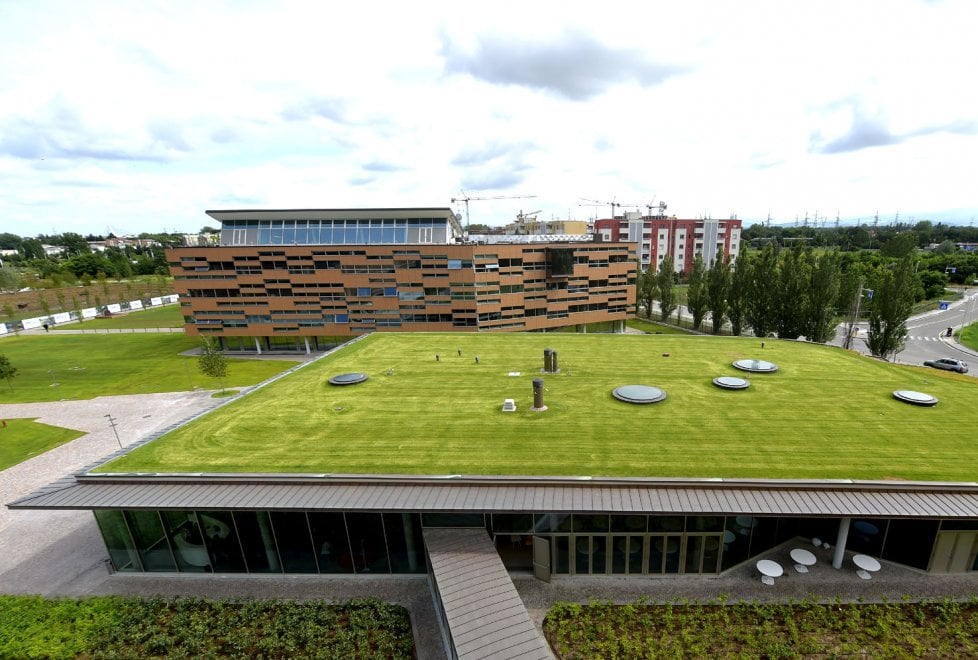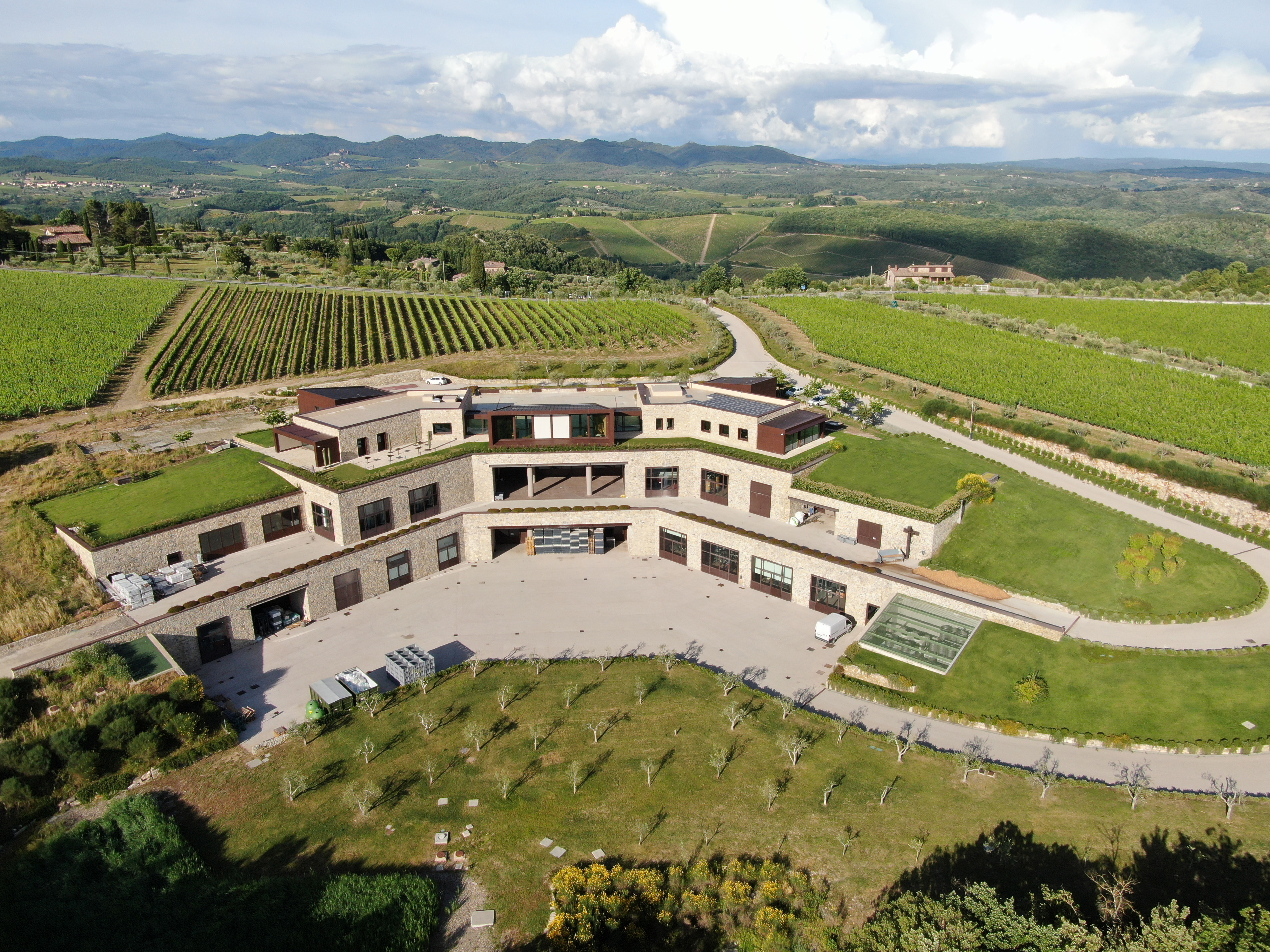SUSTAINABLE, BUT CERTIFIED

ABSTRACT
DAKU, aware that sustainability requirements are now necessary to realize a state-of-the-art project, has become the first company in Italy to have EPD Certification on Rooftop Green systems up to installation.
EPD is a Level III environmental certification, so it requires external scrutiny on the submitted data to ensure its correctness. DAKU's EPD-certified products are not only sustainable but also meet the needs, of those involved in a building project, to obtain the prestigious environmental certifications, which are increasingly present and in demand in international markets and which attest to the sustainability of buildings from the point of view of design, construction and operation.
THE MARKET SEEKS SUSTAINABILITY
Those who want to be up-to-date in the world of construction today cannot ignore the design and construction of "sustainable" buildings.
In order to truly call oneself "sustainable," it is necessary to certify building products so that the end result can meet the highest international standards.
DAKU, aware that sustainability requirements are now necessary to realize a project in step with the times, has voluntarily submitted itself to a certification path, recognized internationally, becoming the only company in Italy to have EPD Certification on Hanging Green systems and on the installation of Hanging Green systems.


WHAT IS EPD CERTIFICATION
An EPD is an Environmental Product Declaration (EPD), which consists of a document indicating the environmental impact related to the production of a specific quantity of a product or service.
It is a tool created through the application of the LCA (Life Cycle Assessment) methodology, which is regulated by ISO Standards and is based on the Life Cycle Analysis methodology.
The Standard that governs the development of an EPD is UNI EN ISO 14025:2010 (Environmental Labels and Declarations - Type III Environmental Declarations - Principles and Procedures), which indicates the applicable requirements for certifying a product or service EPD.
The 3 types of environmental labels:
TYPE I: voluntary eco-labels based on a multi-criteria system that considers the entire life cycle of the product, subject to external certification by an independent body.
TYPE II: Eco-labels that make self-declared environmental claims by manufacturers, importers or distributors of products, without the involvement of an independent certification body.
TYPE III: Eco-labels that carry claims based on established parameters and contain a quantification of environmental impacts associated with the product's life cycle calculated through an LCA system. They are independently audited and presented in a clear and comparable form.
The EPD Certification on Hanging Green Systems obtained by DAKU is an informational tool, produced on a voluntary basis, that contains verified, transparent and comparable information on the environmental impact of hanging green systems products.
An essential document for suppliers, designers, specifiers and consumers, compiled after a careful life cycle analysis of DAKU products.
There are different types of EPDs (Product, Sector and Process) and DAKU has a Product EPD, which is the most accurate tool available and contains a description of the environmental impacts related to the entire life cycle of one or more similar products made by other organizations operating in the same sector.
The elements characterizing the EPD
The EPD is thus a Type III environmental label that is obtained after a path that requires compliance with international rules and standards, approval by an independent body, and allows for clear and transparent communication of what the environmental impacts of a product or service are.
In DAKU's case, EPD Certification on Hanging Green Systems contributes to obtaining LEED certifications for the design, construction, and management of sustainable buildings and high-performance land areas.
The sustainability statement cannot be self-referential so DAKU chose to be certified with a Type III EPD environmental label, which, from the point of view of transparency, offers better guarantees for the customer.

THE BENEFITS OF USING EPD-CERTIFIED GREEN ROOF PRODUCTS
It is estimated that buildings in Europe are responsible for a high percentage (about 40 percent) of total primary energy consumption.
Moreover, buildings have been found to deplete the biological diversity of the global ecosystem through the modification of local micro-ecosystems into impermeable man-made spaces devoid of biodiversity.
The environmental impact of building design, construction and operation is therefore enormous, and it seems more urgent than ever to reduce it while simultaneously increasing the well-being of its inhabitants.
The need to ensure high standards of energy efficiency and the sustainability of buildings has initiated numerous research and pilot projects in recent years that have also involved DAKU. Virtuous building practices, methods of analyzing and evaluating energy efficiency and assessing the objective sustainability of a building have been identified.
The EPD Certification on Rooftop Green Systems is the consequence of the effort put into researching products at the forefront of sustainability and preparation for the stringent, nearly year-long audit, which examined a multitude of factors, relating not only to materials, but also to the business structure. For example, the kilometers traveled by the sales force and the associated greenhouse gas emissions were counted The severity of the process was the impetus to start improving environmental impact now and to set a long-term course to continue refining achievements.
DAKU's EPD-certified products are not only sustainable but also meet the requirements, of those involved in a building project, to obtain the prestigious environmental certifications, which are increasingly present and in demand in international markets and which attest to the sustainability of buildings from the point of view of design, construction and operation such as: CasaClima and the BREEAM, ITACA and LEED protocols.
LEED certification, among the most widely used and recognized worldwide, analyzes energy performance, water, C02 emissions, materials and resources used, the ecological quality of building interiors as well as the choice of location and the project as a whole.
Developed by the U.S. Green Building Council (USGBC), the LEED protocol is based on awarding "credits" for each requirement.
The building design must therefore have the necessary characteristics to achieve the maximum score for each area.
For green roofs there is explicit mention in the following credits:
Habitat protection and restoration (1 to 2 points)
Preserve existing natural areas and restore impaired ones in order to provide habitat and promote biodiversity.
Meteoric Water Management (1 to 3 points)
Reduce runoff volume and improve water quality by reproducing the natural hydrology and hydraulic balance of the site, based on historical conditions and undeveloped ecosystems in the region.
Reducing the Heat Island Effect (1 to 2 points).
To minimize effects on the microclimate and human and natural habitats by reducing the heat island effect.
To verify in detail how well DAKU's green roof systems meet the pre-requisites and credits of the voluntary LEED V4 certification system for building design and construction, we have made the data document public.
THE EPD OF DAKU SYSTEMS
The life cycle analysis of the DAKU Hanging Green System was carried out with specially created software to monitor all data, which was then processed and calculated using the Life Cycle Assessment (LCA) technique and used for international assessment of environmental impacts of products.
The analysis of environmental impacts was referred to 1 square meter of green roof (stated unit). To learn about the environmental performance of DAKU products, consult the document on EPD certification of DAKU products.


